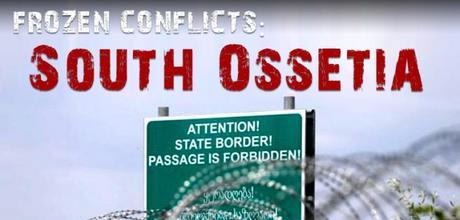 CIPE’s Frozen Conflicts blog series looks at the current situation in seven breakaway regions of the former Soviet Union, with a particular focus on the economic dimension. To learn more about frozen conflicts and what can be done about them read CIPE’s Economic Reform Feature Service article on the subject.
CIPE’s Frozen Conflicts blog series looks at the current situation in seven breakaway regions of the former Soviet Union, with a particular focus on the economic dimension. To learn more about frozen conflicts and what can be done about them read CIPE’s Economic Reform Feature Service article on the subject.
Often lost among coverage of Russia’s annexation of Ukraine’s Crimea, the ongoing crisis in Eastern Ukraine, and the general deterioration of the relationship between Russia and the West, is the quiet process through which the breakaway Georgian region of South Ossetia has been merged into Russia.
After Georgia declared its independence from the Soviet Union in 1991, Russian-backed separatists in South Ossetia in turn declared their own independence from Tbilisi. Fighting lasted until 1992, when Russia brokered a ceasefire agreement and placed peacekeeping troops in the region. South Ossetia voted for absorption by Russia, with no response from Moscow, while Georgia continued not to recognize the region’s independence. As a result, the conflict was frozen, and South Ossetia became a de facto state.
The situation remained such until August 2008 when, following several months of increasing tensions, Georgia and Russia fought a five-day, full-scale war in the region. That war marked a major turning point, as Russia decided to recognize South Ossetia as an independent state. The only other countries to do so were Nicaragua, Venezuela, and the Pacific island of Nauru.
After the war and the closure of the border with Georgia, South Ossetia’s landlocked economy was left devastated and fully dependent on its northern neighbor Russia. The public sector became the main source of income, along with remittances. The private sector ceased to develop; small businesses in particular were hit hard, and were mainly limited to trade and services. Credit became largely unavailable. Many firms stopped working altogether, or operated at only five to ten percent of their capacity from the early 1990s.
Other than an influx of Russian military and construction spending, which created a post-war boom in catering, South Ossetia could not attract any foreign direct investment, given its unrecognized status, the lack of a peace treaty with Georgia, a weak legal framework, and a high level of corruption.
Most South Ossetians continued to view unification with Russia as the best option to improve the region’s social and economic conditions, including by putting local authorities under stricter control from Moscow in an effort to reduce rampant corruption. Russia did not annex the territory, but did play a decisive role in state and institution building in South Ossetia. The region’s ruling elite, including the Prime Minister, Vice Prime Minister, and ministers of defense, economic development, and finance were all assigned from Russia.
Over the past few months, there has been a new turn in South Ossetia’s story, as the region has drawn even closer to Moscow. In March 2015, South Ossetia and Russia signed the “Treaty of Alliance and Integration,” which marked the Russian takeover of South Ossetia’s finances, economy, education, healthcare, and social welfare systems. Russia took responsibility for guaranteeing law and order, ensuing public safety, and controlling drug trafficking; handling internal affairs, investigative bodies, and the prison system; and running the region’s customs system.
The treaty effectively removed borders and restrictions on the movement of goods and people between Russia and South Ossetia. The treaty stipulated that South Ossetia give defense and foreign policy matters to Russia, including control of the Georgian border. Any threat by Georgia against South Ossetia would be considered an aggression against Russia. Meanwhile, Ukraine’s breakaway Donetsk People’s Republic (DPR) and South Ossetia agreed that non-cash payments between the DPR and Russia will flow through the National Bank of South Ossetia. According to the Russian news outlet Vzglyad, the South Ossetian capital of Tskhinvali would become something of a “financial hub.”
The South Ossetian public was generally pleased with the treaty, particularly because Articles 8 and 9 include a pledge to raise government salaries and pensions in South Ossetia to the level of those in the neighboring Russian regions of the North Caucasus. South Ossetians gained a simplified process for obtaining Russian citizenship, and South Ossetians who take Russian citizenship will fall under the Russian social welfare system. A range of foreign governments, including of course Georgia, condemned and refused to recognize the treaty, as any hope of settling the conflict by reintegrating the region with Georgia became even more distant. The treaty was also popular among the South Ossetian elite, as it allowed the region to secure its economic survival by moving closer to Moscow, while nominally maintaining South Ossetian independence.
However recently, it has become clear that the treaty has in fact set in motion the process of South Ossetia’s full absorption into Russia. In October 2015, South Ossetian President Leonid Tibilov announced that the region will hold a Crimea-style referendum on joining the Russian Federation. According to Tibilov, the plans for the referendum were discussed in a meeting with close Putin advisor Vladislav Surkov. Should the referendum on the unification go ahead as planned, it is likely that Russia will face a fresh round of condemnation by the West.
Ann Mette Sander Nielsen is an undergraduate student at Freie Universität Berlin, where she majors in Political Science. Her research interests include Russian and Eurasian politics, the European Union, and international political economy. In the summer of 2015, she was an intern at the Washington, DC offices of the Center for International Private Enterprise, carrying out extensive research on frozen conflicts in the Eurasia region.

